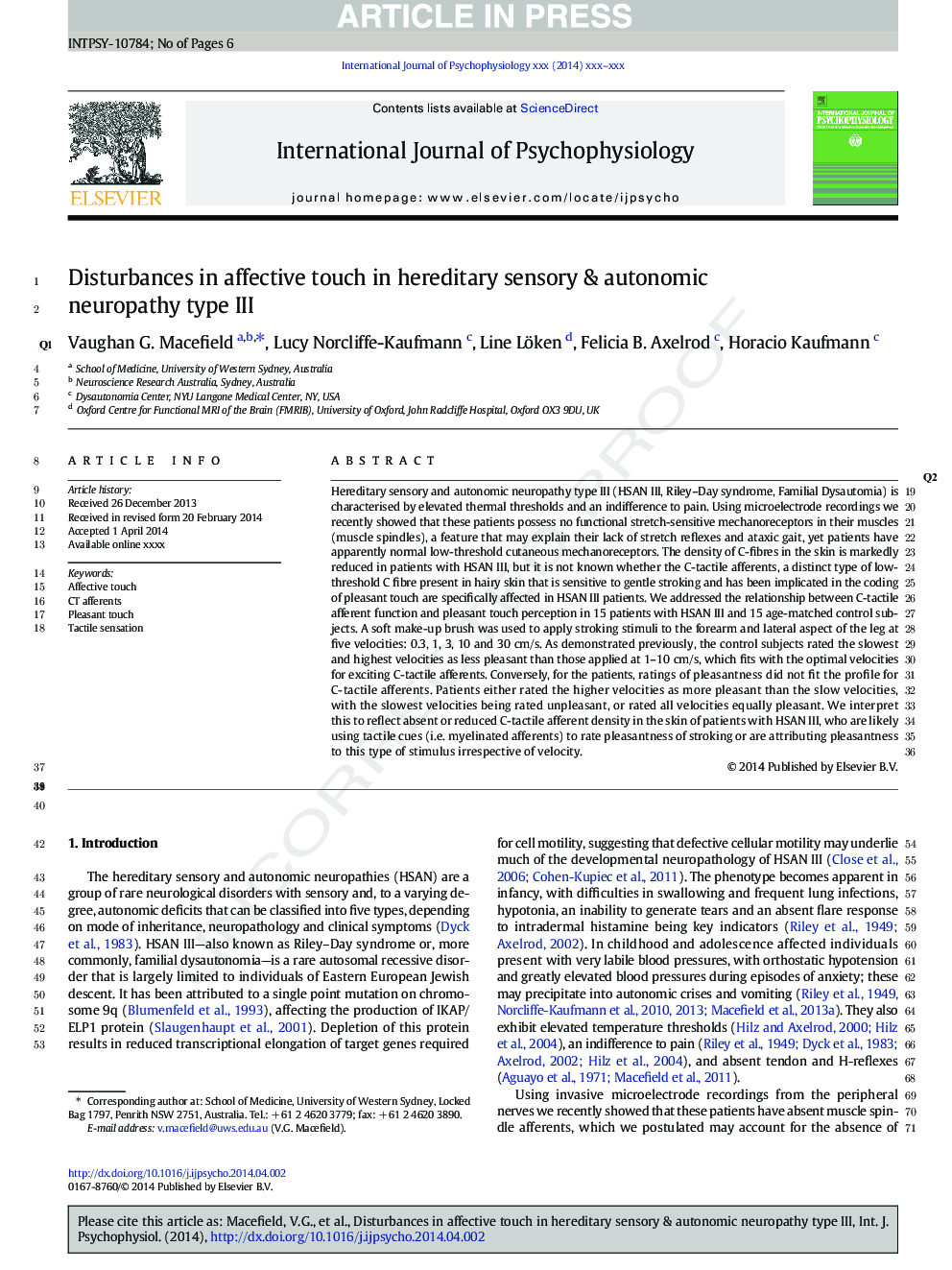| کد مقاله | کد نشریه | سال انتشار | مقاله انگلیسی | نسخه تمام متن |
|---|---|---|---|---|
| 7295690 | 1474417 | 2014 | 6 صفحه PDF | دانلود رایگان |
عنوان انگلیسی مقاله ISI
Disturbances in affective touch in hereditary sensory & autonomic neuropathy type III
دانلود مقاله + سفارش ترجمه
دانلود مقاله ISI انگلیسی
رایگان برای ایرانیان
موضوعات مرتبط
علوم زیستی و بیوفناوری
علم عصب شناسی
علوم اعصاب رفتاری
پیش نمایش صفحه اول مقاله

چکیده انگلیسی
Hereditary sensory and autonomic neuropathy type III (HSAN III, Riley-Day syndrome, Familial Dysautomia) is characterised by elevated thermal thresholds and an indifference to pain. Using microelectrode recordings we recently showed that these patients possess no functional stretch-sensitive mechanoreceptors in their muscles (muscle spindles), a feature that may explain their lack of stretch reflexes and ataxic gait, yet patients have apparently normal low-threshold cutaneous mechanoreceptors. The density of C-fibres in the skin is markedly reduced in patients with HSAN III, but it is not known whether the C-tactile afferents, a distinct type of low-threshold C fibre present in hairy skin that is sensitive to gentle stroking and has been implicated in the coding of pleasant touch are specifically affected in HSAN III patients. We addressed the relationship between C-tactile afferent function and pleasant touch perception in 15 patients with HSAN III and 15 age-matched control subjects. A soft make-up brush was used to apply stroking stimuli to the forearm and lateral aspect of the leg at five velocities: 0.3, 1, 3, 10 and 30Â cm/s. As demonstrated previously, the control subjects rated the slowest and highest velocities as less pleasant than those applied at 1-10Â cm/s, which fits with the optimal velocities for exciting C-tactile afferents. Conversely, for the patients, ratings of pleasantness did not fit the profile for C-tactile afferents. Patients either rated the higher velocities as more pleasant than the slow velocities, with the slowest velocities being rated unpleasant, or rated all velocities equally pleasant. We interpret this to reflect absent or reduced C-tactile afferent density in the skin of patients with HSAN III, who are likely using tactile cues (i.e. myelinated afferents) to rate pleasantness of stroking or are attributing pleasantness to this type of stimulus irrespective of velocity.
ناشر
Database: Elsevier - ScienceDirect (ساینس دایرکت)
Journal: International Journal of Psychophysiology - Volume 93, Issue 1, July 2014, Pages 56-61
Journal: International Journal of Psychophysiology - Volume 93, Issue 1, July 2014, Pages 56-61
نویسندگان
Vaughan G. Macefield, Lucy Norcliffe-Kaufmann, Line Löken, Felicia B. Axelrod, Horacio Kaufmann,